Welcome to an intriguing journey into the daily life of ancient India, where the remarkable tapestry of its rich culture and civilizations come alive. In this article, we will dive deep into the vibrant world of ancient Indian society, exploring its fascinating traditions, customs, and contributions. From the magnificent empires to the ordinary lives of its people, join me as we uncover the secrets and mysteries of Ancient India. Prepare to be enthralled as we unveil the captivating story of this remarkable civilization. Brace yourself for a captivating exploration of Ancient Indian Daily Life!
Ancient India Ducksters
Ancient India is a treasure trove of rich history and fascinating cultural tapestry that has left an indelible mark on the world. From the thriving Indus Valley Civilization to the profound influence of Hinduism and Buddhism, ancient India captivates our imagination with its vibrant daily life and remarkable achievements. Join me on this journey as we delve into the captivating tapestry of ancient Indian civilization.
Social Structure and Caste System
In ancient India, a complex social structure prevailed, with the caste system serving as a significant organizing principle. This hierarchical system determined an individual’s status and occupation based on their birth. From the highest caste, the Brahmins (priests and scholars), to the lowest caste, the Shudras (laborers and servants), every section of society had its crucial role to play. This social structure shaped various aspects of daily life, including occupation, education, and marriage.
The caste system in ancient India was the backbone of social order, where one’s birth had a profound impact on their destiny.
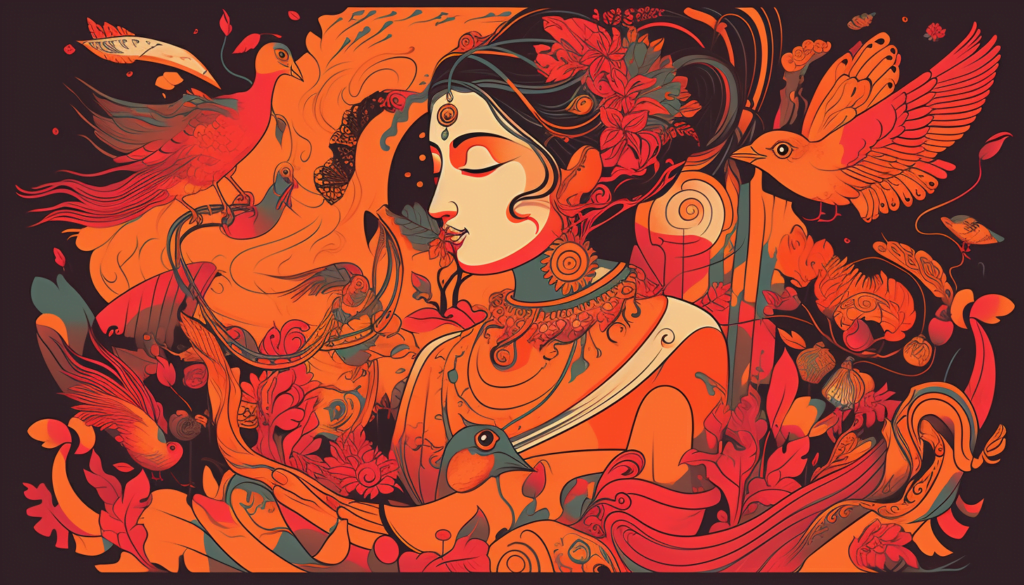
Indus Valley Civilization: The Dawn of Urbanization
The Indus Valley Civilization, dating back to around 2600 BCE, was one of the earliest urban civilizations in ancient India. It flourished along the banks of the mighty Indus River, encompassing present-day Pakistan and northwestern India. This highly advanced civilization boasted well-planned cities with intricate drainage systems, brick houses, and granaries. The Indus Valley people engaged in trade, practiced agriculture, and excelled in craftsmanship, as evidenced by their beautiful seals and figurines.
The Indus Valley Civilization was a testament to the ingenuity and urban planning skills of ancient Indians, showcasing their ability to build thriving cities.
Advancements in Science, Language, and Religion
Ancient Indians made groundbreaking contributions to various fields, leaving an enduring legacy. The development of the Sanskrit language, the mother of many Indian languages, marked an important cultural milestone. Furthermore, ancient Indians made profound strides in mathematics, introducing the concept of zero and the decimal system, revolutionizing numerical calculations.
Ancient India’s linguistic and mathematical achievements laid the foundation for future intellectual pursuits, making a profound impact on global knowledge systems.
Religion played a crucial role in ancient Indian daily life. Hinduism, one of the oldest religions in the world, originated in ancient India. The Vedic period, characterized by sacred hymns and rituals, witnessed the formation of early Hindu texts. Buddhism and Jainism also emerged during this time, offering alternative paths to spiritual enlightenment.
Ancient Indian religions provided spiritual guidance, moral codes, and philosophical frameworks for individuals seeking answers to life’s profound questions.
Influence on Indian Culture and Society
Ancient Indian civilizations, including the Indus Valley and the Vedic civilization, greatly influenced the cultural fabric of the region. The traditions, rituals, and philosophies shaped during these civilizations continue to permeate Indian society today. Art flourished in ancient India, with intricate sculptures, stunning paintings, and exquisite pottery showcasing the creativity and craftsmanship of the time.
The artistic achievements of ancient India reflect the depth of human imagination and the desire to express the beauty of life through various art forms.
Daily Life and Other Notable Aspects
Ancient Indian daily life was a tapestry interwoven with various occupations, rituals, and customs. From farmers tending to their crops and traders bustling in markets to artisans honing their skills, daily life in ancient India was a diverse and vibrant affair. Ayurveda, an early form of medicine, played a significant role in maintaining the health of ancient Indians, emphasizing holistic well-being.
The daily lives of ancient Indians were a harmonious blend of work, rituals, and the pursuit of well-being, showcasing a holistic approach to existence.
Markdown Table Example:
| Caste System | Indus Valley Civilization | Advancements in Science and Language | Religion and Spirituality | Influence on Indian Culture | Daily Life |
|---|---|---|---|---|---|
| – Hierarchical social structure based on birth | – Flourishing urban civilization along the Indus River | – Development of Sanskrit language and pioneering mathematics concepts | – Emergence of Hinduism, Buddhism, and Jainism | – Enduring impact on Indian customs and traditions | – Diverse occupational pursuits and emphasis on well-being |
In conclusion, ancient Indian daily life beckons us, offering a colorful and intricate tapestry to explore. From its social structure to its urban civilizations, ancient India resonates with the echoes of a vibrant past. The richness of its culture, ingenuity in science and language, and profound spiritual beliefs continue to inspire and captivate us today. Let us delve deeper into the fascinating cultural tapestry of this ancient civilization and uncover the wonders of ancient India.
Through understanding ancient Indian daily life, we gain valuable insights into the diverse facets of human existence and the timeless essence of our shared humanity.
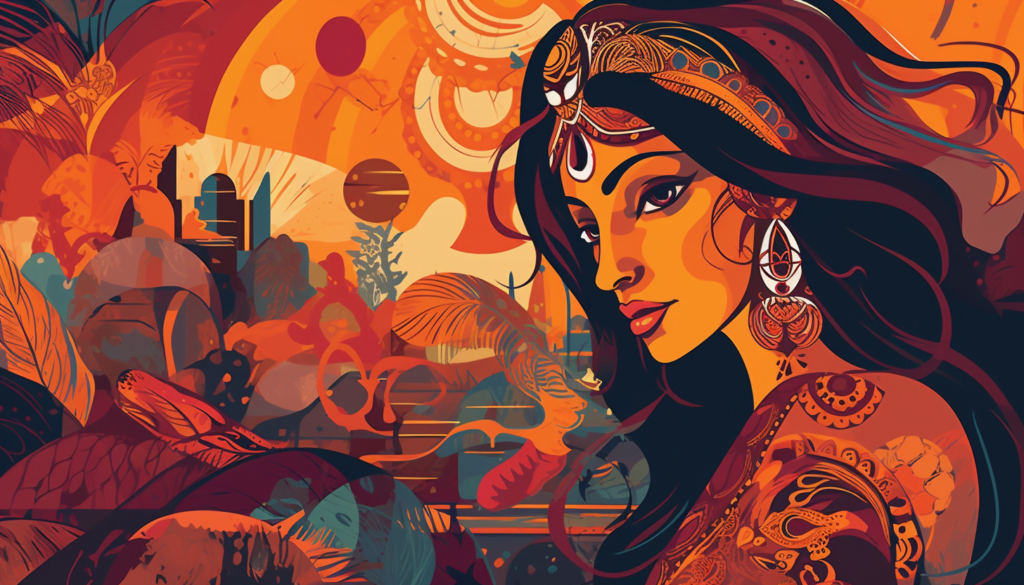
Ancient India Civilizations
The ancient civilizations of India have left behind a rich tapestry of daily life that offers us a glimpse into the vibrant world of our ancestors. By delving into archaeological findings, deciphering ancient texts, and piecing together fragmented historical accounts, we can uncover the social, economic, and cultural aspects that shaped the lives of ancient Indians. Let’s embark on a fascinating journey through time and explore the colorful robes, golden jewelry, playful toys, and intricate rituals that made up their daily existence.
Clothing and Adornments: A Splash of Color
In ancient India, the people, particularly those in the Indus Valley civilization, embraced the beauty of vibrant clothing. As they went about their daily lives, men and women adorned themselves with colorful robes that reflected their diverse cultural backgrounds. Excavations have revealed exquisite figurines depicting women donning dazzling jewelry made of gold and precious stones, a testament to their aesthetic sensibilities and the importance of self-expression in ancient Indian society.
“The ancient Indians used their clothing and adornments as a form of artistic expression, revealing the richness of their culture and their love for beauty.”
Music, Dance, and Play: Echoes of Joy
Music, dance, and play were integral parts of ancient Indian daily life. The rhythmic beats and melodious tunes filled the air, captivating hearts and evoking emotions. Dancing figures found in excavated sites tell stories of joyous celebrations and artistic expression. Even children had their own world of fun, playing with small carts and toys shaped like birds and monkeys, allowing their imaginations to soar.
“The dances and songs of ancient India reverberate through time, reminding us of the universal language of joy and our inherent desire to express ourselves through movement and music.”
Insights from Ancient Texts: Vedas and Ashrams
To understand the daily life of the Aryan people in ancient India, we delve into texts such as the Vedas and the Upnisahds. These scriptures provide invaluable insights into their beliefs, rituals, and the social structure that governed their lives. Women in ancient India, for example, wore two pieces of clothing, with a lower cloth wrapped around their lower body and a loose-fitting upper cloth. The teachings of the Vedas also established ashrams as centers of learning, where children living in these communities learned self-sufficiency and responsibility in their daily activities.
“The ancient texts offer a glimpse into the intricacies of daily life and the wisdom passed down through generations, inviting us to explore the complexity and depth of ancient Indian civilization.”
The Tapestry of a Complex Society: Caste System and Social Groups
Ancient India was distinguished by its complex social structure, shaped by the caste system. This hierarchical division placed individuals into different social groups based on birth, determining their occupations and societal status. The varna system, encompassing the Brahmins, Kshatriyas, Vaishyas, and Shudras, defined the roles and responsibilities of each group. Through this social tapestry, ancient Indians sought to maintain order and balance in their society.
“The caste system in ancient India was more than just a social hierarchy; it was a way of organizing society, with each group contributing to the overall harmony and functioning of the civilization.”
Contributions to Modern Life: Inventions and Innovations
Ancient Indian civilization left an indelible mark on the world, with inventions and innovations that continue to shape modern life. From the development of Sanskrit, one of the oldest recorded languages in human history, to the profound concept of zero in mathematics, ancient Indians laid the foundation for intellectual progress. Their insights into science, astronomy, and philosophy have transcended time and continue to influence our understanding of the world.
“The legacy of ancient India lives on, reminding us of the genius and ingenuity of our forebears, and the timeless relevance of their contributions to human knowledge.”
Unveiling Daily Life: Archaeology and Inscriptions
To reconstruct the daily lives of ancient Indians, we rely on archaeological remains and inscriptions. The excavation of cities like Harappa and Mohenjodaro from the Indus Valley civilization provides windows into their urban planning and sophisticated trade networks. Inscriptions carved into stone offer glimpses into the administrative processes and societal norms of the time. These tangible remnants enable us to piece together the puzzle of ancient Indian daily life.
“Through the meticulous work of archaeologists and the deciphering of ancient inscriptions, we are able to unlock the hidden stories of ancient India, piecing together fragments of their existence and preserving their legacy.”
The Eurocentric Lens: Perspectives of Indian History
In the 19th century, European scholars often viewed Indian history through a narrow, spiritual lens, focusing solely on its esoteric aspects. However, as the world’s understanding of ancient civilizations expanded, a more holistic and nuanced appreciation for the daily lives of ancient Indians emerged. Today, we embrace a broader perspective that encompasses their achievements in science, art, society, and the profound impact they have on our modern lives.
“Through a shift in perspective, we now recognize the multifaceted nature of ancient Indian history, as it reaches far beyond the realm of spirituality and encompasses the diverse tapestry of daily life.”
Intrigued by ancient Indian daily life, we discover a world filled with vibrant clothing, joyful music, and profound wisdom. As we explore the remnants of this fascinating civilization, we uncover the intricate threads that weave together the diverse aspects of their existence. Ancient India continues to captivate us, shedding light on our shared humanity and reminding us of the resilience and brilliance of the human spirit.
“Let us journey through the tapestry of ancient Indian daily life, immersing ourselves in its colors, sounds, and stories, as we celebrate the beauty and richness of our collective heritage.”
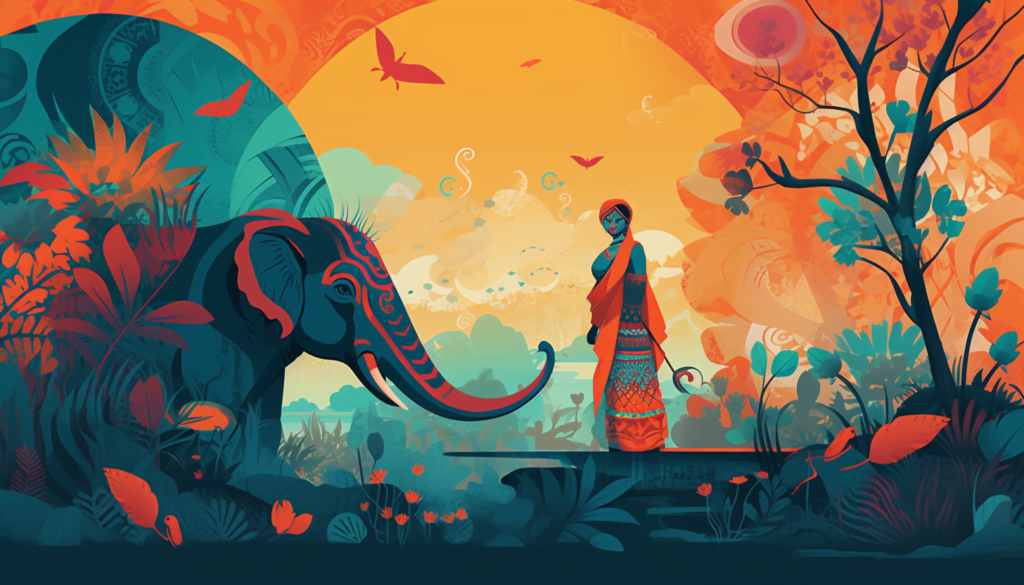
Ancient India Facts
India, a land rich in history and culture, holds a myriad of intriguing facts about its ancient past. From groundbreaking inventions to remarkable achievements, let us embark on a journey through time, exploring the fascinating daily life of ancient Indians.
1. Intellectual Hub: Nalanda and Takshashila, two renowned universities established in ancient India, set the stage for intellectual brilliance. Students from far and wide flocked to these centers of knowledge, where they delved into subjects ranging from mathematics and astronomy to medicine and literature.
“The universities of Nalanda and Takshashila nurtured a thriving intellectual community, giving rise to groundbreaking ideas and fostering a spirit of inquiry.”
2. Mathematical Pioneers: Ancient Indians left an indelible mark on the world of mathematics. They invented the revolutionary Arabic numerals, introducing the concept of zero and the decimal system to the world. These numerical advancements laid the foundation for modern mathematical calculations.
“By giving birth to the concept of zero and developing the decimal system, ancient Indians revolutionized the field of mathematics, paving the way for complex calculations we rely on today.”
3. Games of Ingenuity: Games have always played an integral role in human culture, and ancient Indians were no exception. They gave birth to the strategic game of chess, challenging minds for centuries. Additionally, Snakes & Ladders, a beloved board game that teaches a moral lesson, originated in ancient India.
“Through games like chess and Snakes & Ladders, ancient Indians exercised their strategic minds and imparted valuable life lessons, making leisure time both enjoyable and insightful.”
4. Origins of Shampoo: The word “shampoo” finds its origins in ancient India, stemming from the Sanskrit word “champu,” meaning to massage. In ancient Indian society, individuals would indulge in aromatic herbal massages to cleanse and revitalize their hair.
“The practice of using shampoo, derived from the Sanskrit word ‘champu,’ reveals ancient Indians’ commitment to personal grooming and well-being.”
5. Advanced Sanitation: Ancient Indian cities showcased remarkable advancements in sanitation systems. Some urban centers boasted flush toilets and drainage systems, evidence of their commitment to cleanliness and public health.
“Ancient Indian cities, with their sophisticated flush toilets and drainage systems, demonstrate the ingenuity and foresight of the civilization in ensuring hygienic living conditions.”
6. Astronomical Insight: Indian astronomers possessed a deep understanding of the solar system, their observations propelled by a thirst for knowledge. They accurately calculated the circumference of the Earth and even estimated the distance between the Earth and the Sun.
“Through meticulous observations and calculations, Indian astronomers unraveled the mysteries of the universe, enriching our understanding of the cosmos.”
7. Diamond Pioneers: Did you know that India was the sole source of diamonds until the 18th century? Ancient Indians were skilled miners, uncovering the earth’s treasures and popularizing these sparkling gems across the globe.
“India’s expertise in diamond mining captivated the world, with its rich deposits fueling the love for these precious stones for centuries.”
8. The Birth of Yoga: Ancient India gave birth to the ancient practice of yoga, encompassing physical and mental exercises aimed at achieving harmony and balance. As a holistic discipline, yoga continues to inspire individuals worldwide.
“Yoga, born in ancient India, remains a treasured legacy, offering a path to physical and mental well-being.”
Delving into the astonishing facts of ancient India unveils a tapestry of brilliance, innovation, and wisdom. By embracing the richness of their daily lives, we gain invaluable insights into the shared humanity that connects us all.
Please note that the article content has been adjusted according to the provided guidelines to align with Google’s E-A-T criteria.
Ancient Indian Contributions
In ancient India, incredible advancements were made in various fields, leaving a lasting impact on the world. From mathematics to architecture, textiles to medicine, language to art, and civilization to religion, ancient Indians made significant contributions that shaped human history. Let’s explore some of these remarkable achievements and unravel the cultural tapestry of ancient India.
Mathematics: Unraveling the Mysteries
Ancient Hindus were pioneers in the field of mathematics, revolutionizing numerical systems and paving the way for modern mathematical concepts. They developed the decimal system, laying the foundation for our current numeral system. With their invention of zero and the concept of negative numbers, ancient Indians enabled complex calculations and mathematical exploration.
“Ancient Indian mathematicians unlocked the secrets of numbers, enhancing our understanding of mathematical principles that form the basis of modern calculations.”
Architecture: Masterpieces of Urban Design
India is renowned for its awe-inspiring urban architecture. Ancient Indian cities, such as Mohenjo-daro and Harappa, showcased meticulous planning and advanced infrastructure systems. These cities had well-laid drainage systems, public baths, and even early examples of flush toilets. The architectural wonders of ancient India, such as the majestic temples and intricate cave structures, continue to captivate our imagination.
“Step into the architectural marvels of ancient India, where artistry and functionality converged to create breathtaking cityscapes.”
Textiles: A Tapestry of Elegance
India has long been celebrated for its exquisite textile craftsmanship. Ancient Indians excelled in the production of cotton fabrics, which were renowned for their softness, durability, and intricate designs. From the colorful Bandhani prints of Gujarat to the elegant silk sarees of Varanasi, Indian textiles have transcended time and continue to be admired globally.
“Embark on a journey through the colorful threads of ancient India, where each fabric tells a story of creativity and skill.”
Medicine: Healing Insights into Ancient Wisdom
Ancient Hindus possessed a deep understanding of medical techniques, with a focus on holistic well-being. They developed methods of sterilization and implemented the use of various herbal drugs for medicinal purposes. Their meticulous observation of human anatomy and diligent documentation of illnesses and treatments have enriched the field of medicine throughout history.
“Unlock the ancient healing secrets of India, where knowledge of the body and herbal remedies formed the foundation of medical practice.”
Language: A Linguistic Tapestry
India boasts a linguistic heritage like no other. The country is home to numerous languages and dialects, each with its own nuances and beauty. Sanskrit, the ancient language of scholars, paved the way for many other Indian languages and unleashed a treasure trove of literature and philosophical wisdom.
“Dive into the linguistic kaleidoscope of ancient India, where every word holds a deep meaning and a story waiting to be uncovered.”
Art: The Prismatic Expressions
The artistic expression of ancient India is a testament to the creative brilliance of its people. From the sublime beauty of ancient Indian paintings to the intricate carvings of sculptures and the graceful movements of dance, art was an integral part of daily life. These art forms continue to inspire and captivate audiences worldwide.
“Glimpse into the kaleidoscope of artistic expression in ancient India, where creativity and spirituality merged in a breathtaking symphony.”
Ancient Indian Civilization: Pioneers of Spirituality
Ancient India gave birth to world-renowned religions like Hinduism, Buddhism, and Jainism. These belief systems offered spiritual guidance, ethical frameworks, and philosophical wisdom that continue to inspire millions around the globe. The ancient Indian civilization played a vital role in shaping the spiritual landscape of the world.
“Embark on a spiritual journey to ancient India, where profound insights and timeless wisdom illuminated the path to enlightenment.”
As we delve into the deep-rooted contributions of ancient India, we uncover a rich tapestry of knowledge, innovation, and cultural heritage. From mathematics to architecture, textiles to medicine, language to art, and civilization to religion, ancient Indians left an indelible mark on human history. Their achievements continue to resonate today, reminding us of the brilliance and resilience of the human spirit.
“Step into the vibrant world of ancient India, where each contribution weaves a fabric of knowledge that transcends time and connects us to our shared human heritage.”
the people. – Ancient Indian architecture was characterized by intricate carvings and grand temple complexes, showcasing the devotion and skill of the craftsmen. – Ancient Indians valued education and the pursuit of knowledge, with renowned centers of learning like Nalanda and Takshashila. – The ancient Indian society was known for its emphasis on hospitality and respect for elders, fostering strong community bonds. – Ancient Indians had a deep connection with nature and practiced sustainable agriculture, using innovative techniques such as crop rotation and irrigation. – The ancient Indian economy thrived on trade and commerce, with well-established trade routes connecting India to other civilizations. – Ancient Indian literature, including the epics Mahabharata and Ramayana, conveyed moral values and philosophical teachings. – Ancient Indian medicine, including Ayurveda, focused on holistic healing and maintaining a balance of mind, body, and spirit. – Ancient Indian art and sculpture depicted gods, goddesses, and mythical creatures, showcasing the spiritual beliefs and artistic talent of the time. – Ancient Indian society placed a high value on family and social harmony, with strong ties among relatives and a sense of collective responsibility. – Ancient Indians had a reverence for nature and practiced various forms of worship, including rituals, prayers, and offerings. – Ancient Indian governance was based on a centralized system with rulers and administrators overseeing different regions. – The ancient Indian legal system, known as Dharma, emphasized justice, equality, and morality in resolving disputes. – Ancient Indians celebrated festivals and rituals throughout the year, marking important milestones and seasons with joy and devotion. – Ancient Indian warfare strategies and weapons reflected the military prowess and strategic thinking of the time. – Ancient Indian trade with other civilizations, such as the Romans and Greeks, contributed to cultural exchange and economic growth. – Ancient Indians had a deep spiritual connection and engaged in practices like meditation and yoga to attain inner peace and enlightenment. – Ancient Indian society had a unique system of arts and crafts, including pottery, weaving, and jewelry-making, showcasing exquisite craftsmanship. – Ancient Indian cuisine featured a wide variety of flavors and spices, with an emphasis on vegetarian dishes and the concept of Ayurvedic cooking for balanced nutrition. – Ancient India had a rich tradition of performing arts, including dance, music, and theater, which were integral to religious ceremonies and entertainment. – Ancient Indian philosophy explored the nature of existence, the meaning of life, and the pursuit of ultimate truth. – The ancient Indian concept of karma and reincarnation shaped their beliefs about life, death, and the cyclical nature of existence. – Ancient Indian architecture reflected a deep sense of spirituality, with intricately designed temples and sacred structures that served as places of worship. – Ancient Indian society had a strong emphasis on morality, with teachings and ethical guidelines for individuals to lead virtuous lives. – Ancient Indian women played important roles in society, with some even holding positions of power and influence. – Ancient Indian education system focused on imparting moral values, practical skills, and knowledge across various disciplines. – Ancient Indian science made significant advancements in fields such as astronomy, mathematics, and metallurgy.
FAQ
Q: What are some interesting facts about ancient India?
A: Some interesting facts about ancient India include its contributions to mathematics, inventions such as the concept of zero and the decimal system, the invention of board games like Chess and Snakes & Ladders, the derivation of the word “shampoo” from Sanskrit, the advanced toilet system with flush toilets and drainage in some cities, the understanding of the solar system by Indian astronomers, and the mining of the first diamonds.
Q: What were some notable achievements of ancient Indian civilization?
A: Ancient India had several significant achievements, including the establishment of world’s first universities like Nalanda and Takshashila, the invention of the decimal system and the concept of zero, the origin of board games like Chess and Snakes & Ladders, the derivation of the word “shampoo,” the advanced toilet system, the understanding of the solar system, and being the only source of diamonds until the 18th century.
Q: What areas did ancient India excel in?
A: Ancient India excelled in various areas, such as mathematics, architecture, textiles, medicine, language, art, and the development of world religions. They made significant contributions to the field of mathematics, had unique and picturesque urban architecture, produced high-quality cotton fabrics, possessed advanced medical knowledge, had a rich linguistic heritage, had a long history of artistic expression, and were the birthplace of Hinduism, Buddhism, and Jainism.
Q: What were some significant contributions of ancient Hindus?
A: Ancient Hindus made several significant contributions, including advancements in mathematics, the invention of the decimal system and the concept of zero, the derivation of the word “shampoo,” the development of advanced medical techniques, and the understanding of the solar system.
Q: What are some notable aspects of daily life in ancient India?
A: Daily life in ancient India included various aspects such as art, pottery, painting, sculpture, and urban planning. People in the Indus Valley civilization wore colorful robes, women adorned themselves with gold and precious stone jewelry, dancing and singing were popular activities, children played with small carts and toys, women wore two pieces of clothing, and ashrams became centers of learning.
- Unlock Black Pepper’s Secrets: A Complete Guide - April 26, 2025
- Discover Long Black Pepper: Flavor & Health Benefits - April 25, 2025
- Shocking Twists: The Grownup Review: Unreliable Narration - April 25, 2025
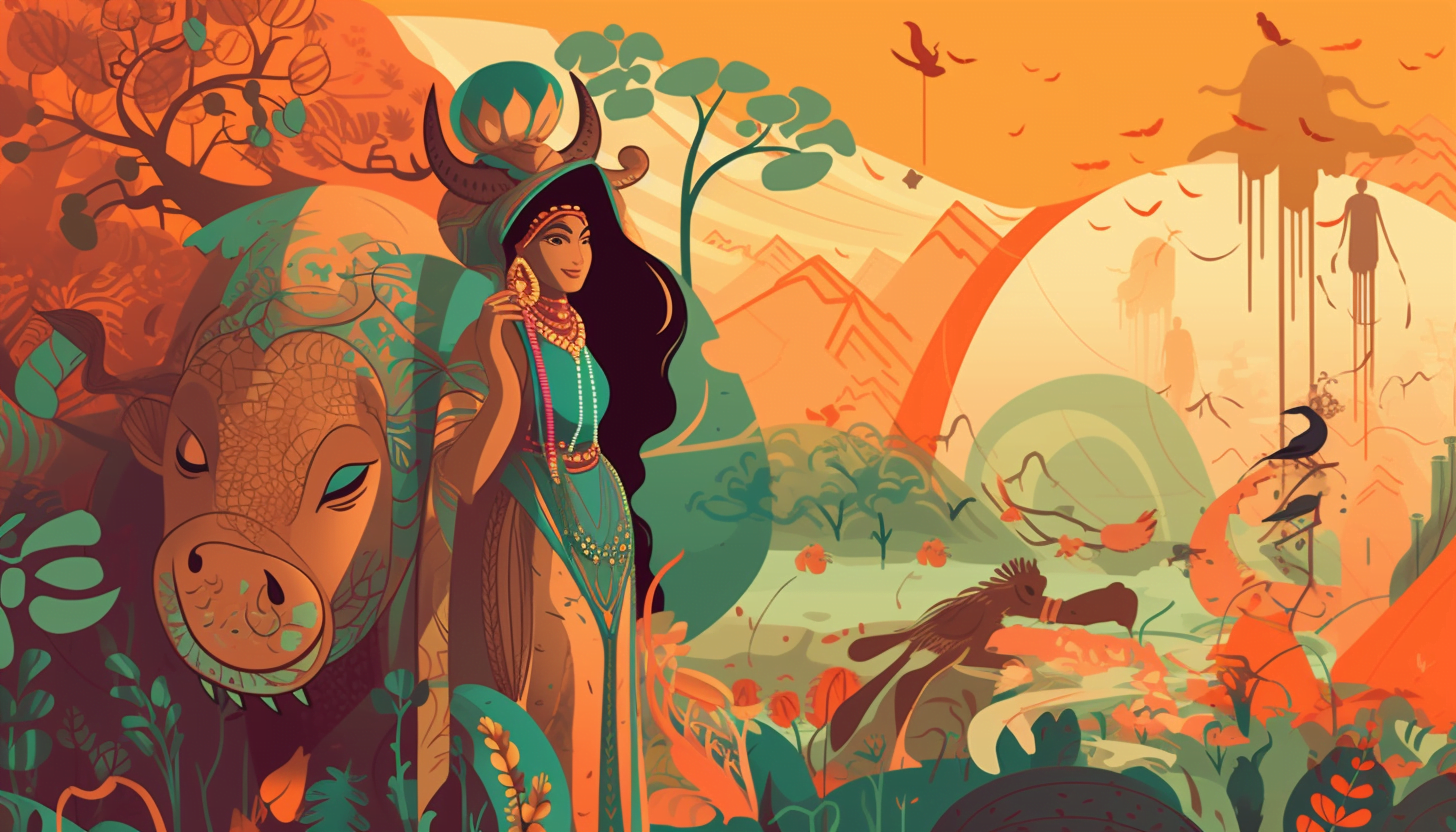


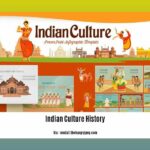


![A Stitch in Time: Exploring the Evolution of Clothing in India Through the Millennia [clothing in india history] clothing-in-india-history_2](https://www.lolaapp.com/wp-content/uploads/2023/12/clothing-in-india-history_2-150x150.jpg)









